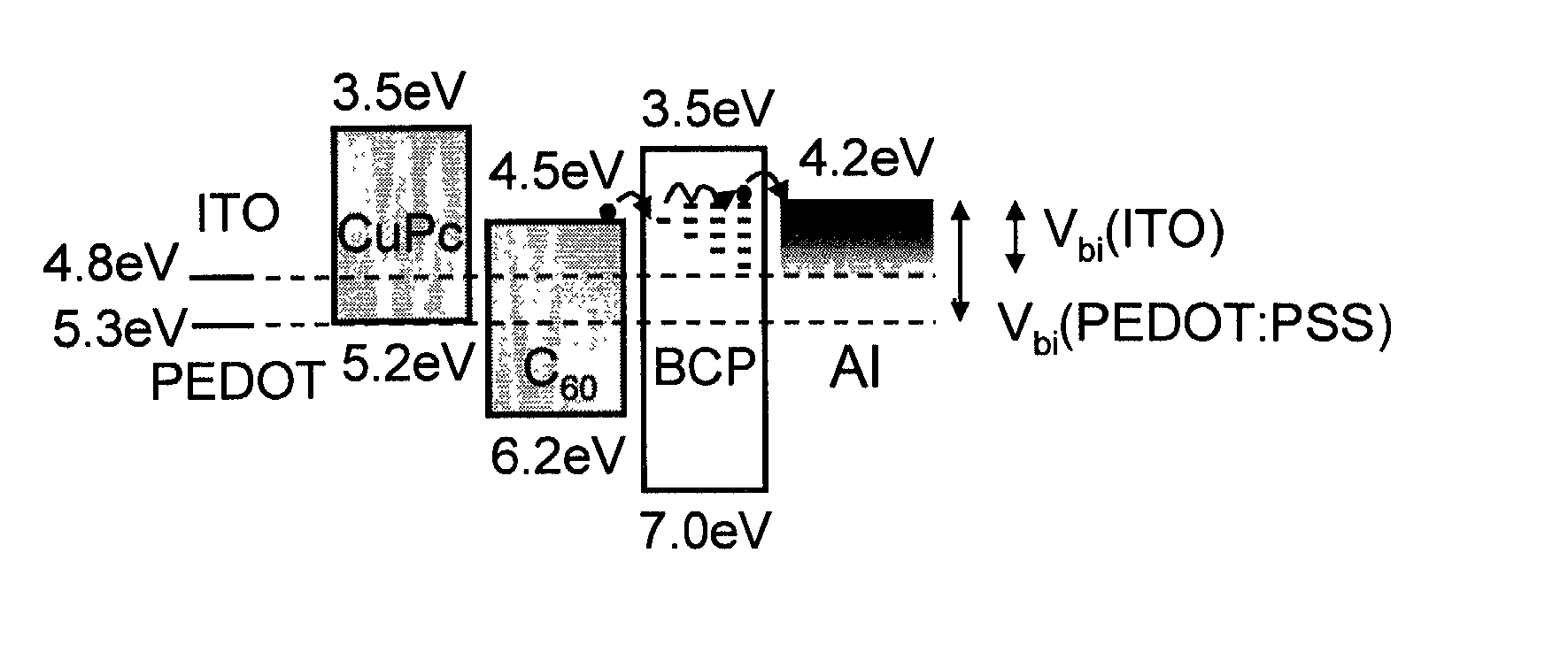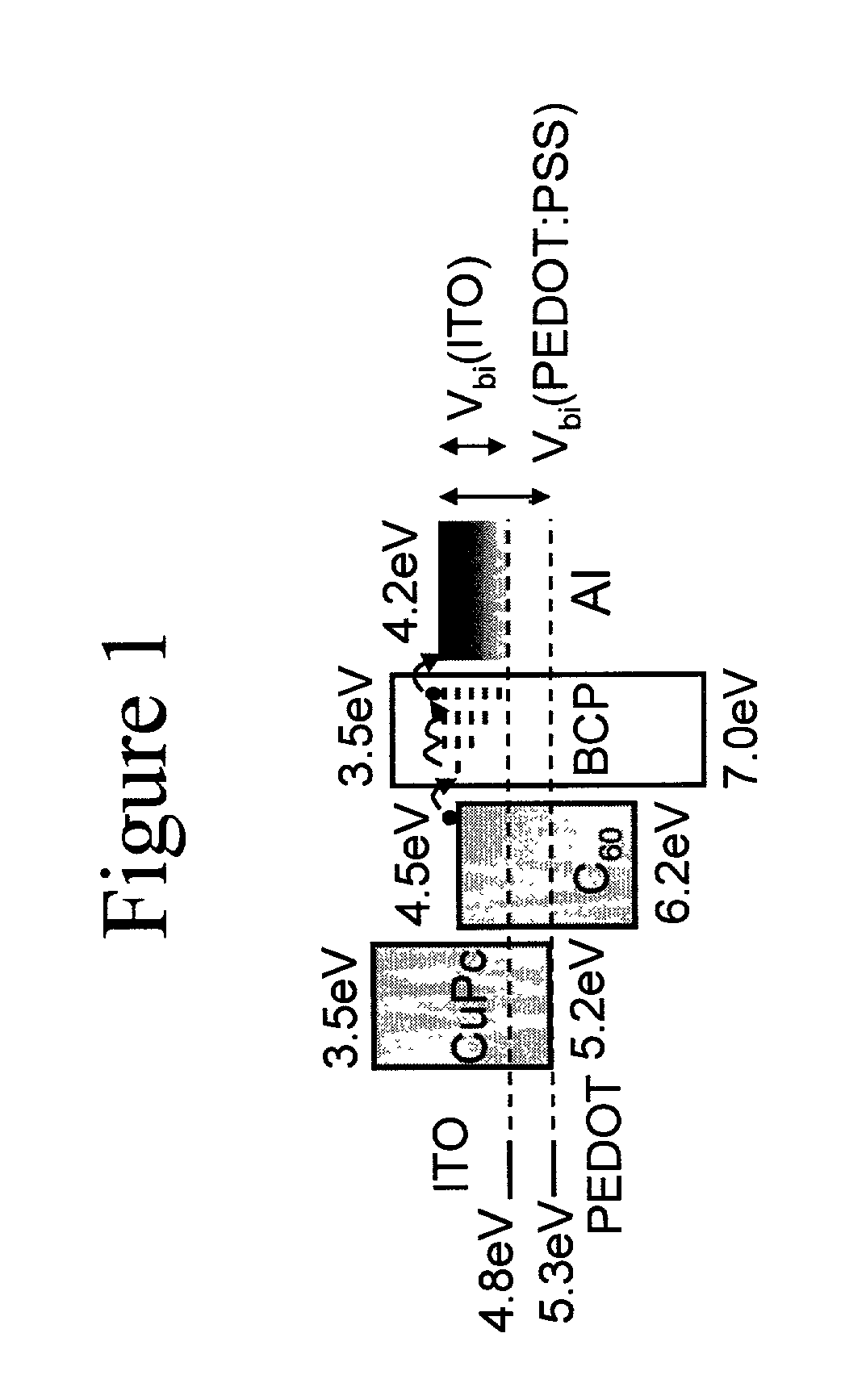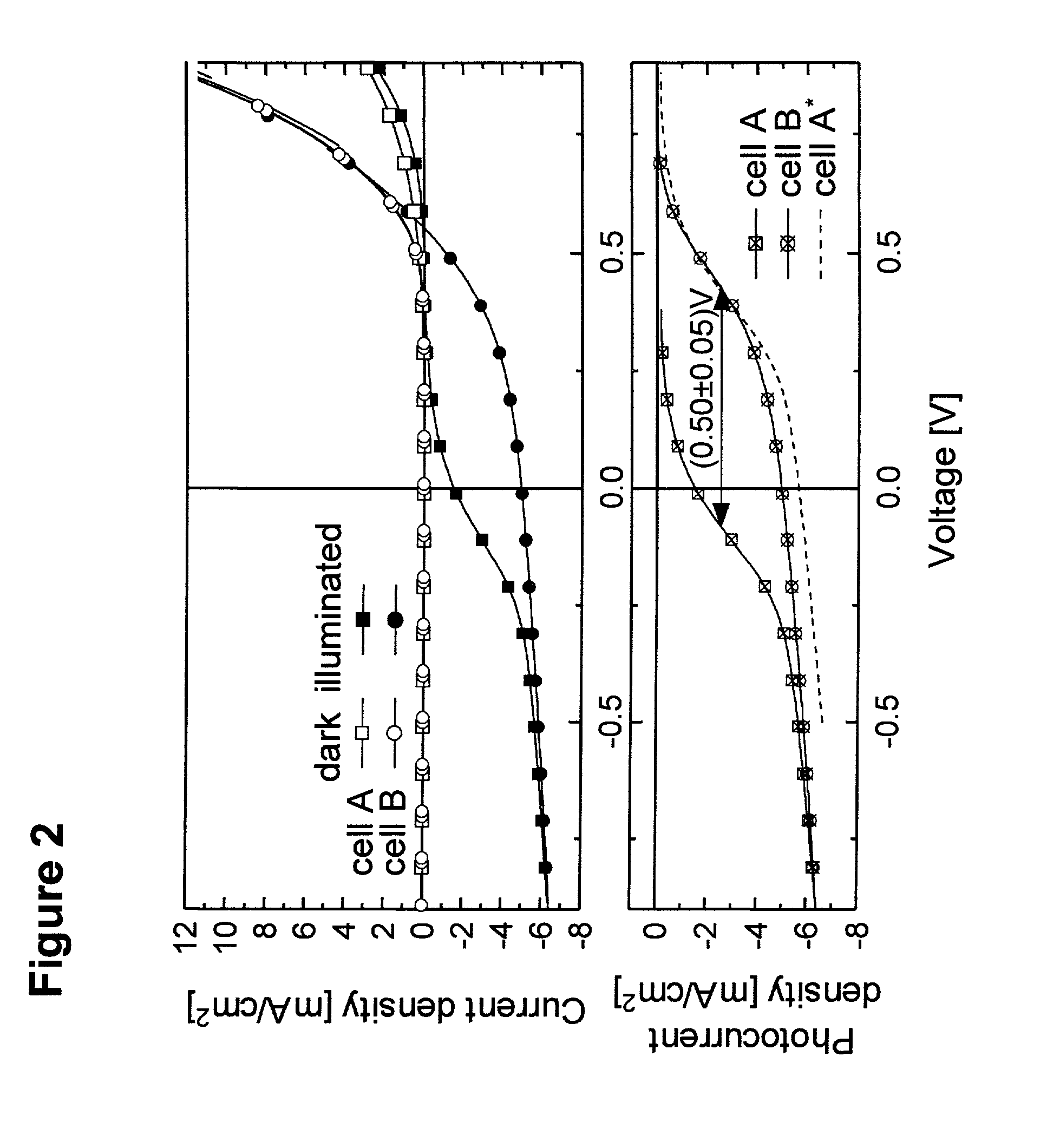Solar cells using fullerenes
a fullerene, solar cell technology, applied in the field of solar cells, can solve the problems of high cost, large surface area of efficient crystalline-based devices, and inability to meet the requirements of photosensitive optoelectronic devices, and achieve the effect of great improvement efficiency
- Summary
- Abstract
- Description
- Claims
- Application Information
AI Technical Summary
Benefits of technology
Problems solved by technology
Method used
Image
Examples
Embodiment Construction
[0052] Exemplary embodiments are fabricated on pre-cleaned glass substrates coated with a .about.1400 .ANG. thick transparent, conducting indium-tin-oxide (ITO) anode (with a sheet resistance of 40 .OMEGA. / sq.). After solvent cleaning, the substrates are treated with an O.sub.2-plasma (50W, 100 mTorr, 5 minutes). Unless otherwise specified, the ITO film is then coated with a (320.+-.10) .ANG. thick film of PEDOT:PSS by spin coating from solution at 4000 rpm for 40 seconds, followed by drying at 90.degree. C. for 15 minutes in vacuum. The organic materials can be obtained commercially, and then purified using thermal gradient sublimation. Films are grown at room temperature in high vacuum (.about.1.times.10.sup.-6 Torr) in the following sequence: a 50 .ANG. to 400 .ANG. thick film of the donor-like copper phthalocyanine (CuPc), followed by a 100 .ANG. to 400 .ANG. thick film of the acceptor-like C.sub.60. Next, a 50 .ANG. to 400 .ANG. thick bathocuproine (BCP) EBL is deposited. The c...
PUM
| Property | Measurement | Unit |
|---|---|---|
| Power conversion efficiency | aaaaa | aaaaa |
| Size | aaaaa | aaaaa |
| Photoconductivity | aaaaa | aaaaa |
Abstract
Description
Claims
Application Information
 Login to View More
Login to View More - R&D
- Intellectual Property
- Life Sciences
- Materials
- Tech Scout
- Unparalleled Data Quality
- Higher Quality Content
- 60% Fewer Hallucinations
Browse by: Latest US Patents, China's latest patents, Technical Efficacy Thesaurus, Application Domain, Technology Topic, Popular Technical Reports.
© 2025 PatSnap. All rights reserved.Legal|Privacy policy|Modern Slavery Act Transparency Statement|Sitemap|About US| Contact US: help@patsnap.com



